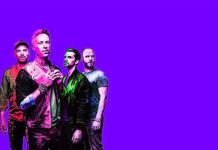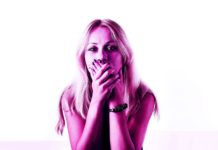Colin Prior is a landscape photographer based in his homeland of Scotland. He travels the world trying to find new parts of it he wants to share with all of us. He knows first hand how difficult the photography business is.
1. Have you ever pursued another medium than photography?
No. When I was younger, in art school, there was a guy in my class who was much better at drawing than me, and I came to realize I was going to have to do something else to get the quality I was looking for. Then I started with Photography. Photography gave me the ability to achieve a perfection that I couldn’t get elsewhere.
2. If you had to live anywhere other than Scotland, where would that be?
My family is here. To live anywhere else never would really be home. Wherever I go, the heart is still in Scotland.
For young aspiring photographers, I think it’s difficult to go to other parts of the world and do what they can do in their backyard. The longer you spend in a place, the better you can capture it. The process of photography is a dissolution process, it isn’t just you and the camera, it’s what you’re absorbing. You can’t shortcut the time.
3. Have you ever pursued other subjects than nature in your photography?
Architecture. That’s for work though. I try to give the client the best photographs I’m capable of, but there is a difference between your work and your own photographs. There’s a difference between having passion in your photography and understanding the marketplace. You have to work to be able to afford to shoot your personal ones. I publish my own calendars, did lithographic prints (in the 90s), go to art expos in NY. Photography has arrived at the same place as the music industry where bands are making their money from gigs and merchandise more so than recording a great record.
Within five years, the ability to make money from photography will be very difficult, it’s already difficult, but soon it’ll be nearly impossible, I’ll be fine because I’m already known, but if you’re an up and coming photographer, you have to ask yourself, how do I get noticed. The way you get noticed is to find any way to bring in money for your photography. Get a publisher because it’s all about distribution. Go to Google Trends, and see if you’re being noticed. You brand yourself, and this brand is made from how many people take your name to the Internet. You can’t just take a random collection of photographs to your brand; you need a story.
4. What was the most difficult or most dangerous expedition you’ve undertaken?
During the late 90’s I traveled to over 40 countries and did a million bios. I learned some jobs are challenging logistically and others are physically demanding.
My latest job in the Karakorum Mountains in Pakistan has been maybe my most difficult. I got food sickness and lost 21 pounds; plus dealing with the altitude and dehydration. There are no shortcuts, you have to deal with the altitude. We were climbing glaciers, but we came back because I didn’t want to take the risk of loosing one of the team.
I’ve gone on 26 climbing expeditions for different international clientele. For this latest one, the last book published on the Karakorum Mountains was in 1896. No one else is making the work I’m making there.
5. Who were your inspirations/idols growing up?
Galen Rowell. I became aware of his work when I picked out his book, “In the Throne Room of the Mountain Gods,” from the library. I also love his 1986 book, “Mountain Light: In Search of the Dying Landscape.” I agreed with a lot of what he said, but he was into 35cm and I like big format. You need large format to communicate subtleties.
There are also guys today like Paul Wakefield. He has published 3 books in large format. Cameras are always improving, so big format is possible to do right. There’s just no substitute for high resolution.
6. Is there somewhere or something that you’ve always wanted to capture on camera, but haven’t had a chance?
A Unicorn. When you go to some of these places on shoots, sometimes you have this moment where you realize you’re experiencing life at its fullest; for 4 minutes you feel completely content. If a unicorn walked into the frame then, you wouldn’t even be surprised.
I also want to photograph snow leopards. They’re very difficult to find, and you have to go on a long expedition to even have a chance.
The Karakorum has many images I want to shoot. I’m hoping for political help to use a military helicopter for aerial images; that’ll be really unique. With that, I could photograph routes up K2, which will help climbers. But this won’t happen until next year.
7. Is there a landscape photographer out there today who you believe is doing something truly revolutionary or fresh and inspiring?
Not really, no. The reason they’re not doing it is because they’re not making enough money to do it. The British photographer, Tim Flach, is good. He photographs animals in such a way that he can capture the soul of the animals. I like his books: Equus, which is a study in horses; More than human; and Dogs Gods.
8. Would you rather be confronted by a bear or a mountain lion?
Mountain Lion—you can throw stones at it. You’re not going to kick a bear, and you can’t run from it. They’ll try to rip your jaw off. I’ve been in Alaska, Kodiak island, and saw 18 bears, and they are just massive, massive animals.
9. You’ve talked about mankind’s degrading connection with the natural world. How do you believe youths and generations to come can reconnect with the natural world?
It’s a real challenge. Virtual reality has removed them from the environment. And once a travel company discovers somewhere, the culture is changed. There’s a limit to what photographers can do—we can inspire people. Photographers don’t take photos to save the planet; they take them for themselves.
10. Have you ever witnessed something that you knew was perfect for great photography, but you didn’t have your camera on you or you couldn’t set up in time?
There’s moments that sometime come and go. I was underwater and a school of game fish went by, and I knew that the reflection of their scales would make a great photo, but I didn’t have flash on me.
11. Do you ever not have your camera on you?
I seldom have a camera on me unless I’m out shooting.
12. Do you have a favorite piece of art of your own and of someone else’s?
Of Mine: My new book coming in November, “Scotland’s Finest Landscapes.” It has a collection of these panoramic images I’ve made over the years. The front cover image is of the Isle of Skye taken from the summit of Mt. Blaven is my favorite. It was done with a 120 roll film and there were only 4 shots on the film.
Of Someone Else’s: In the art museum, here in Glasgow, there are these Romantic paintings created in 18th and 19th century.
13. How do you define adventure?
It’s self-exploration, trying to discover things about myself. The journey on in the inner path.
Colin Prior has been previously featured on ClapwayTV, and it was a true honor to get to sit down with him and talk. I learned a lot from him about how to approach photography and life. To get the full story, check out his tips.

Photo Courtesy of blog.lowepro.com

















